Appreciate a Dragon Day
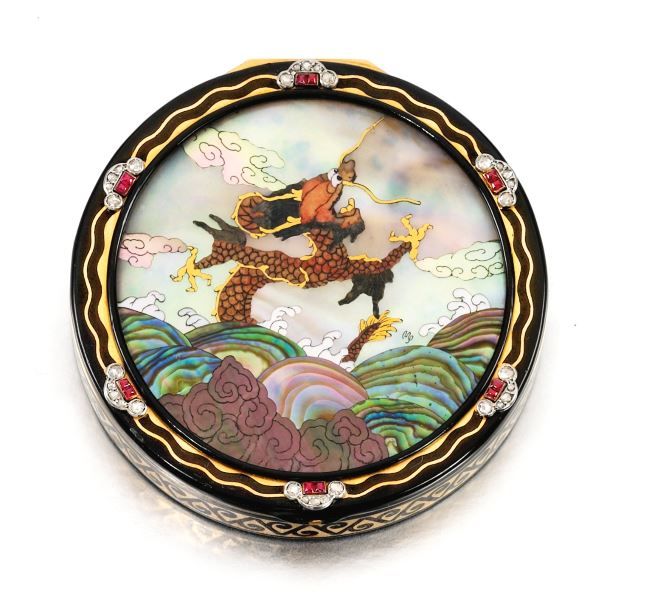
Appreciate a Dragon Day Chinese dragon compact by Cartier, 1929 in mother-of-pearl, ruby, enamel, and diamonds http://www.sothebys.com/en/auctions/ecatalogue/2014/magnificent-jewels-ge1405/lot.447.html
Appreciate a Dragon Day is one of those whimsical holidays that nobody gets off work. It was apparently invented in 2004 to promote a fictional dragon story, but it is an excellent excuse to share some draconine images, from both the fine and decorative arts.
Book illustrations, of course, are an easy source of dragons. Let’s start with a rather pig-snouted one from The Dragon of Wantley: His Story by Owen Wister (yes, The Virginian Owen Wister).
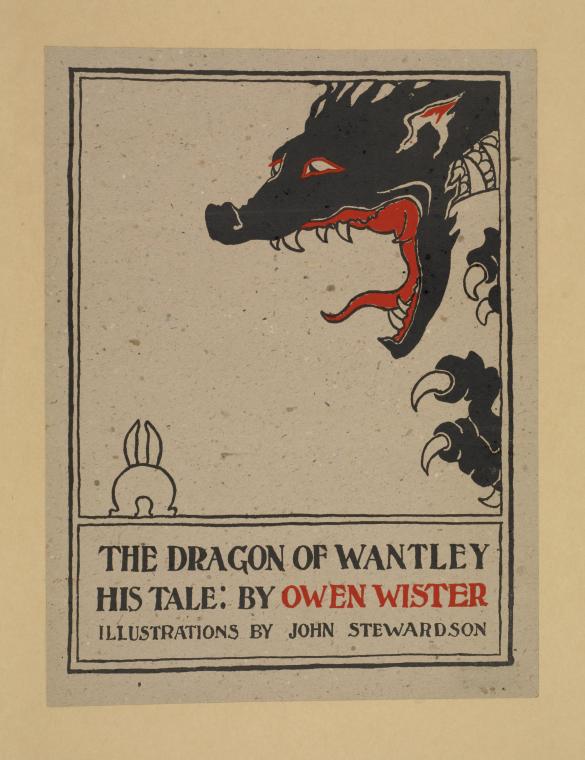
The Dragon of Wantley (1892)
The Dragon’s Story by Tudor Jenks features a dragon like an eager puppy about to bestow sloppy dragon kisses on his master.
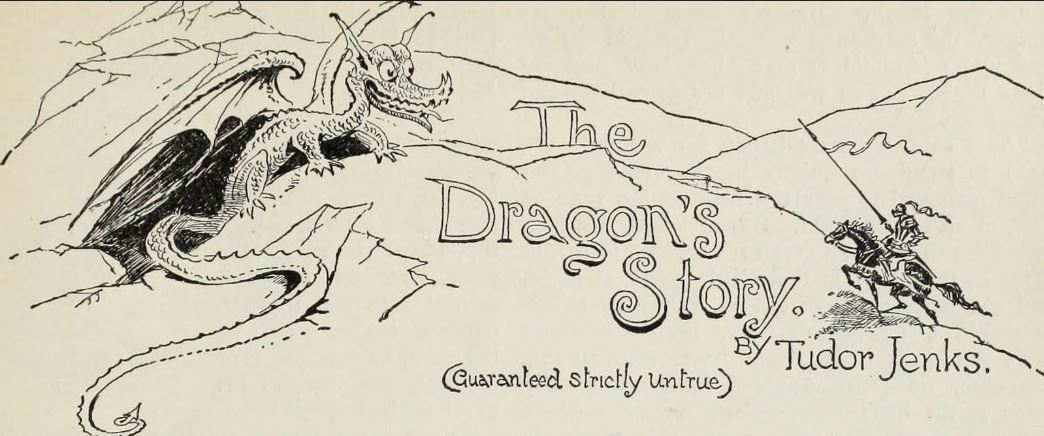
The Dragon’s Story, Tudor Jenks, 1912
This illustration is “The Dragon Flew Off with the Empress” from the fairy tale called “Nine Pea-Hens and Golden Apples” from The Violet Fairy Book. The Empress doesn’t seem terribly worried.

Appreciate a Dragon Day The dragon carried the empress away, The Violet Fairy Book, 1906
The dragon was the Chinese symbol for the Emperor and appears on much of the clothing designed for the Imperial court. They represent the male principle in nature and were believed to bring rain. Five-clawed dragons were reserved for the Emperor, although he could present a five-clawed dragon robe to a favored dignitary. This particular dragon is less fierce and, to be frank, a little goofier than some Imperial dragons.
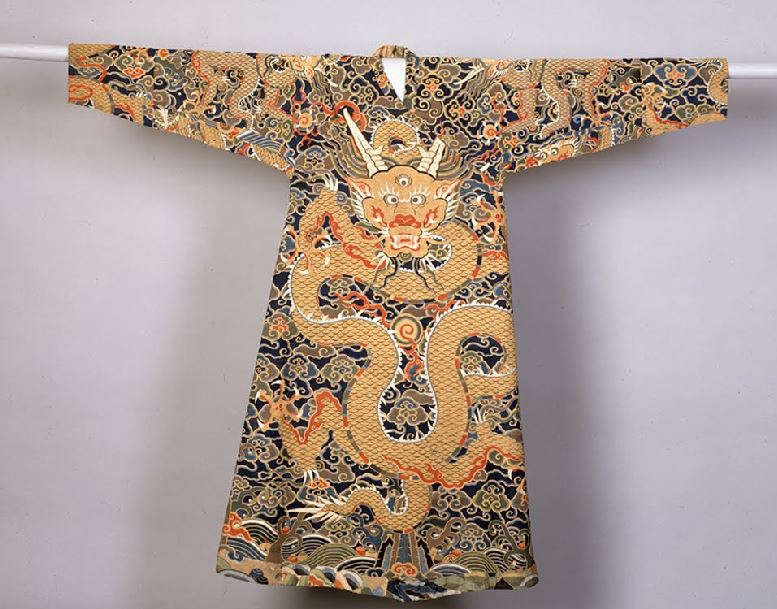
Imperial Dragon robe, 1675-1700 https://www.google.com/culturalinstitute/beta/asset/man-s-jifu-dragon-robe/MAF8Fmse8h79Uw
The articulated bronze model of a dragon by Myochin Muneyoshi is one of those objects I would sell my grandmother to possess, even if the head looks a little like a Gary Larson cartoon.
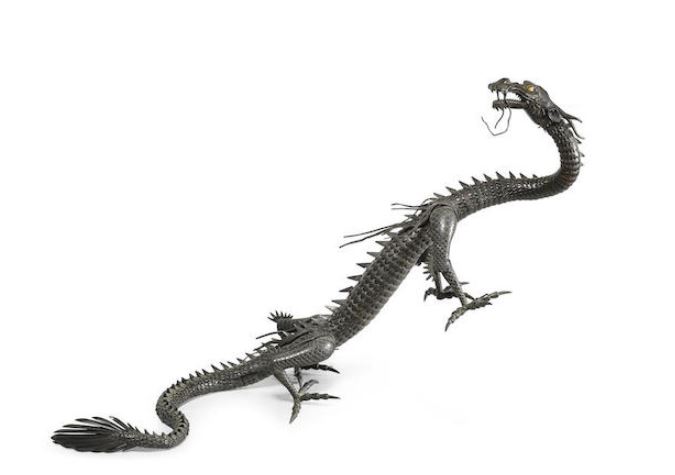
Bronze articulated dragon model, c. 1900 http://www.bonhams.com/auctions/23430/lot/199/

Bronze articulated dragon model, c. 1900 http://www.bonhams.com/auctions/23430/lot/199/
These rainbow dragons incongruously slithering around dainty porcelain vases remind me of that scene in Harry Potter and the Goblet of Fire where the dragon scrabbles for purchase on the roof tiles. Out of their element. But nicely synchronized.
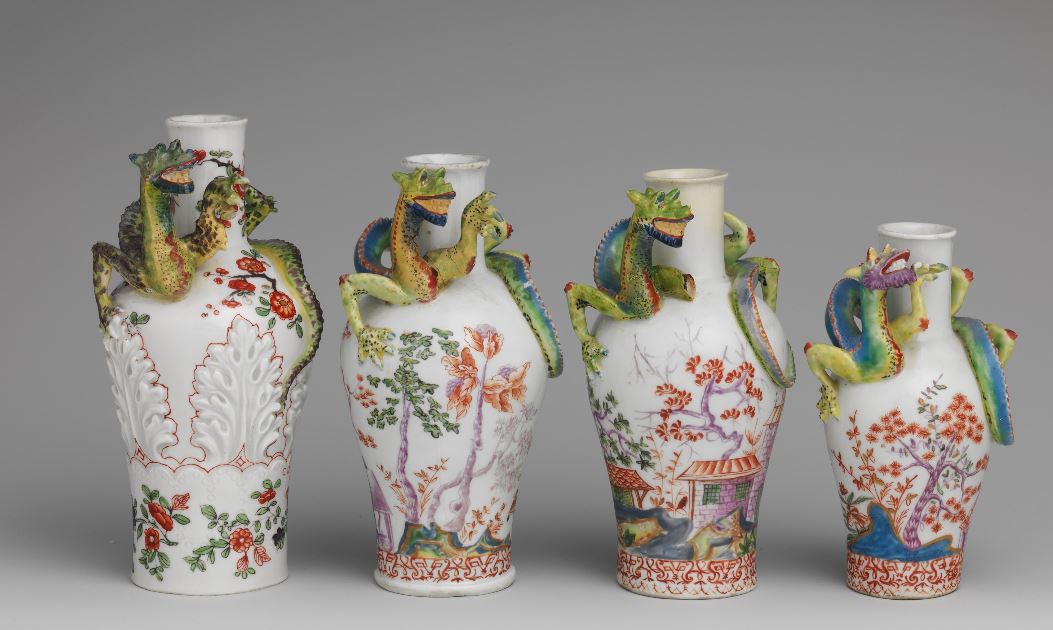
Dragon garniture, Du Paquier factory, c. 1725 http://www.metmuseum.org/art/collection/search/208450?sortBy=Relevance&ft=dragon&pg=2&rpp=20&pos=31
Green Dragon Cocktail by Bertha Lum, 1937, suggests a sinister drink—something containing absinthe, chartreuse, or perhaps Paris green.
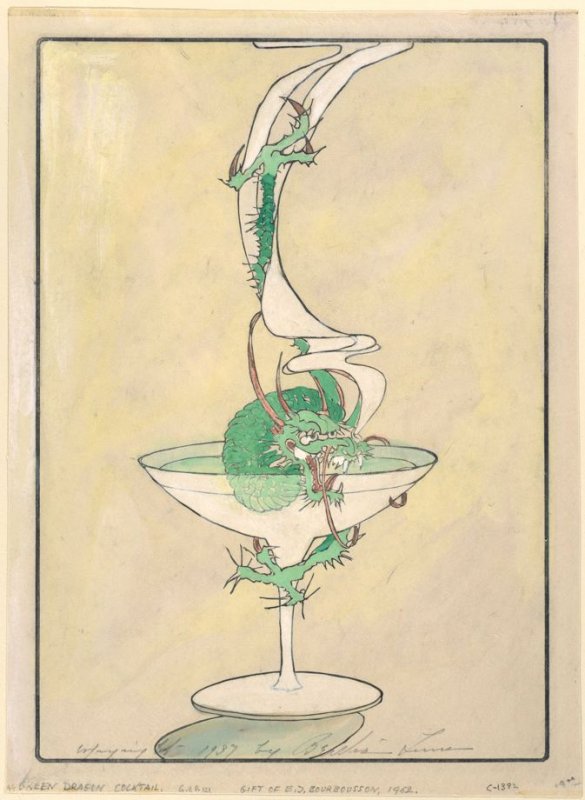
Green Dragon Cocktail, Bertha Lum, 1937 http://art.famsf.org/bertha-lum/green-dragon-cocktail-19627768
Perhaps more wholesome would be the golden, sun-ripened fruit touted by this fruit crate label.
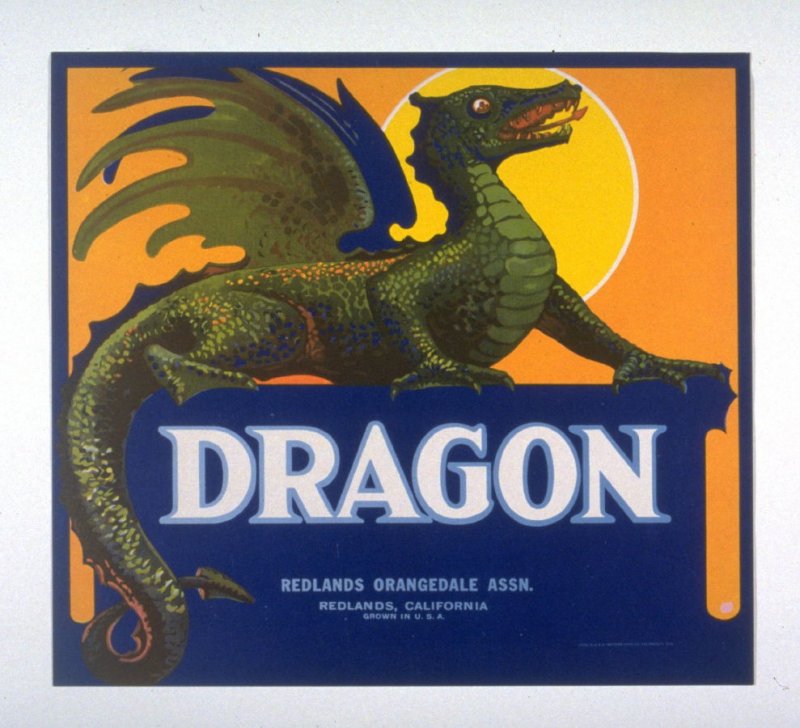
Appreciate a Dragon Day Dragon fruit crate label, c. 1925-1940 http://art.famsf.org/anonymous/dragon-19761171
The dragon, of course, is the symbol of the Old Enemy. St. Margaret of Antioch, pictured in this Hungarian Mystic Marriage of St. Catherine, was swallowed by Satan in the form of a dragon. She is often depicted bursting from the belly or mouth of the dragon. Here she has the Beast on a leash, looking like a badly trained puppy.
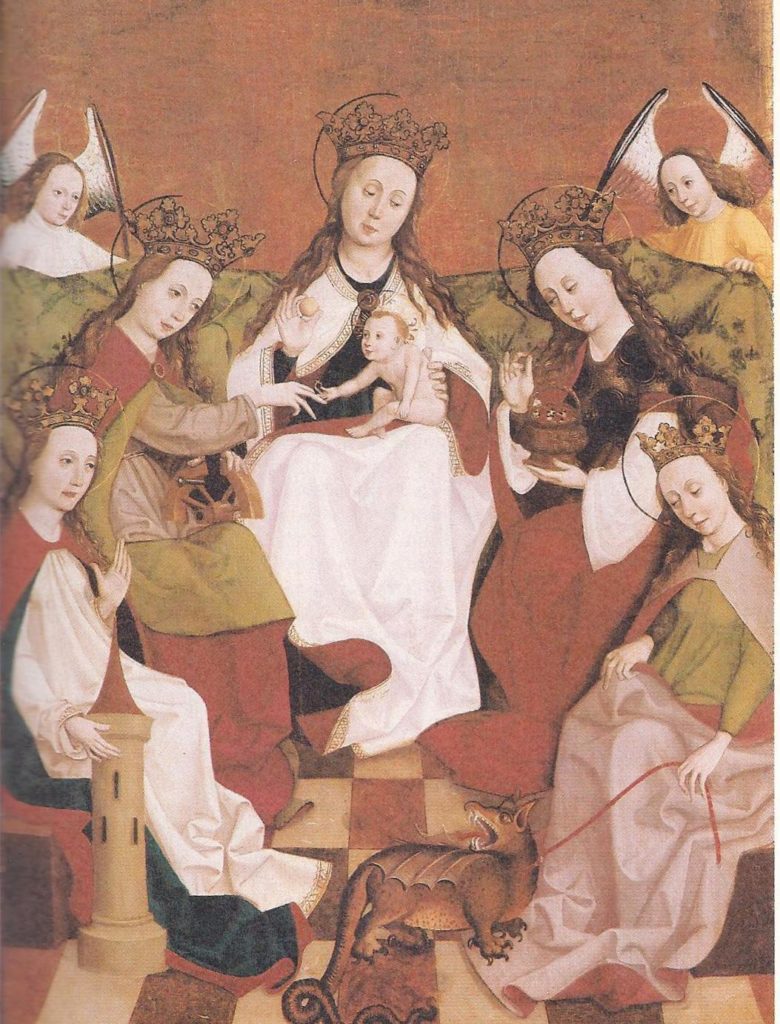
St. Margaret and her pet dragon. The Mystic Marriage of St Catherine. Hungarian museum
We could not let Appreciate a Dragon Day go by without a salute to St. George and the Dragon. Here, again, is a piece I might be persuaded to sell my soul for, Rogier van der Weyden’s St George and the Dragon. The painting is the size of a post-card and yet you can make out the details of the walled village and castle in the background, the tiny horsemen, every detail of the armor…. It is astonishing.
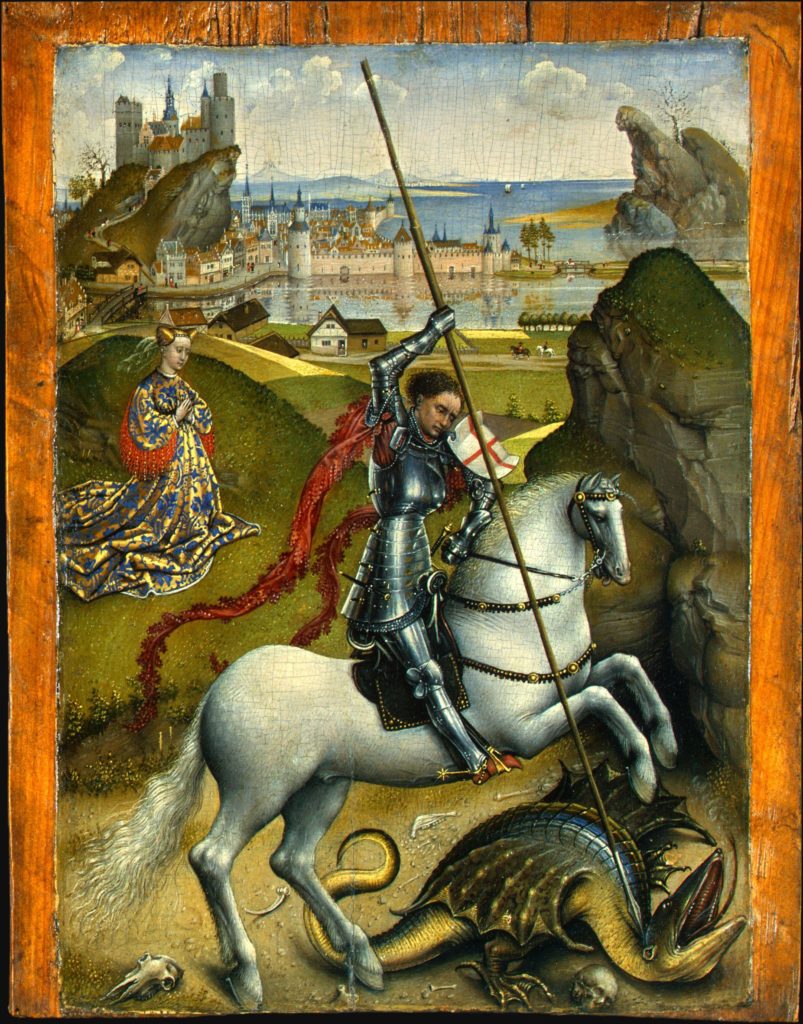
St. George and the Dragon, Rogier van der Weyden (1432-35) https://www.nga.gov/Collection/art-object-page.50662.html
Less astonishing is this The Combat Between St. George and the Dragon, drawn and colored by Princess Alexandrina Victoria of Kent in 1834, perhaps from a pantomime performance?
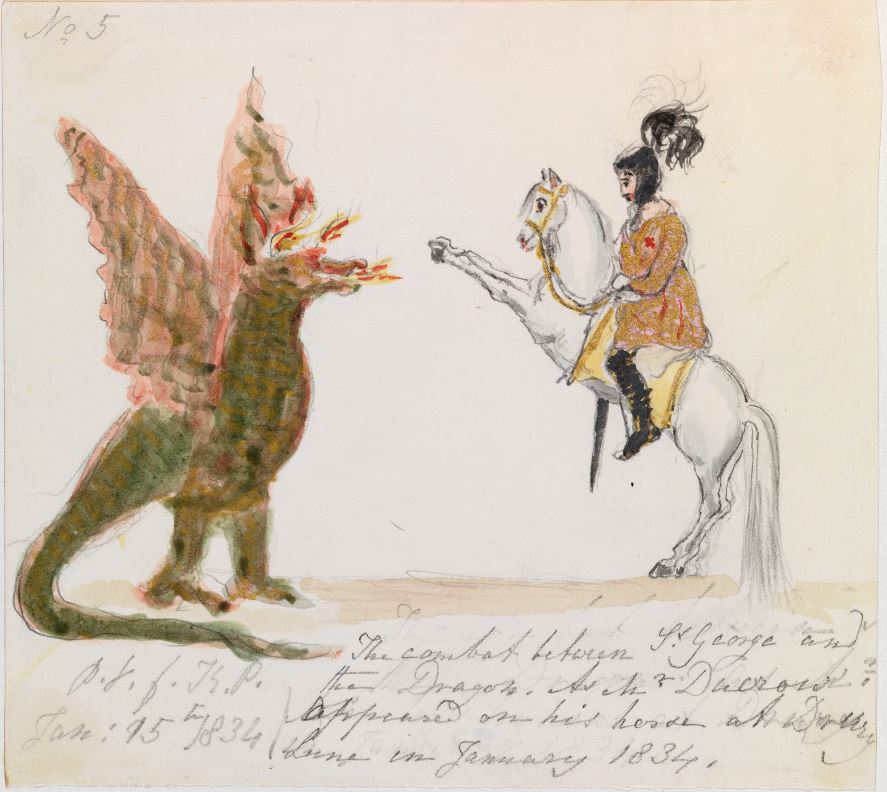
The Combat Between St. George and the Dragon, Princess Alexandrina Victoria of Kent (1834) https://www.royalcollection.org.uk/collection/search#/8/collection/980015-fn/the-combat-between-st-george-and-the-dragon
Princess Victoria’s dragon should actually be called a wyvern, since it only has two legs, but the costume principal was the same for this four-legged stage dragon, c. 1902.
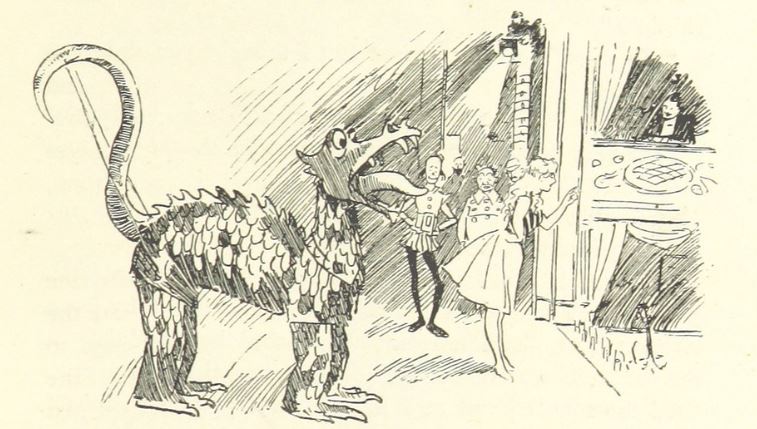
Stage dragon, 1902
Equally fanciful and surreal is this fraktur drawing of a sausage-form winged dragon by American artist Jacob Strickler. The text on the drawing indicates a religious significance–it may have been meant as a companion piece to Strickler’s finished drawing called The Daring Hero, which could be interpreted as St. George.
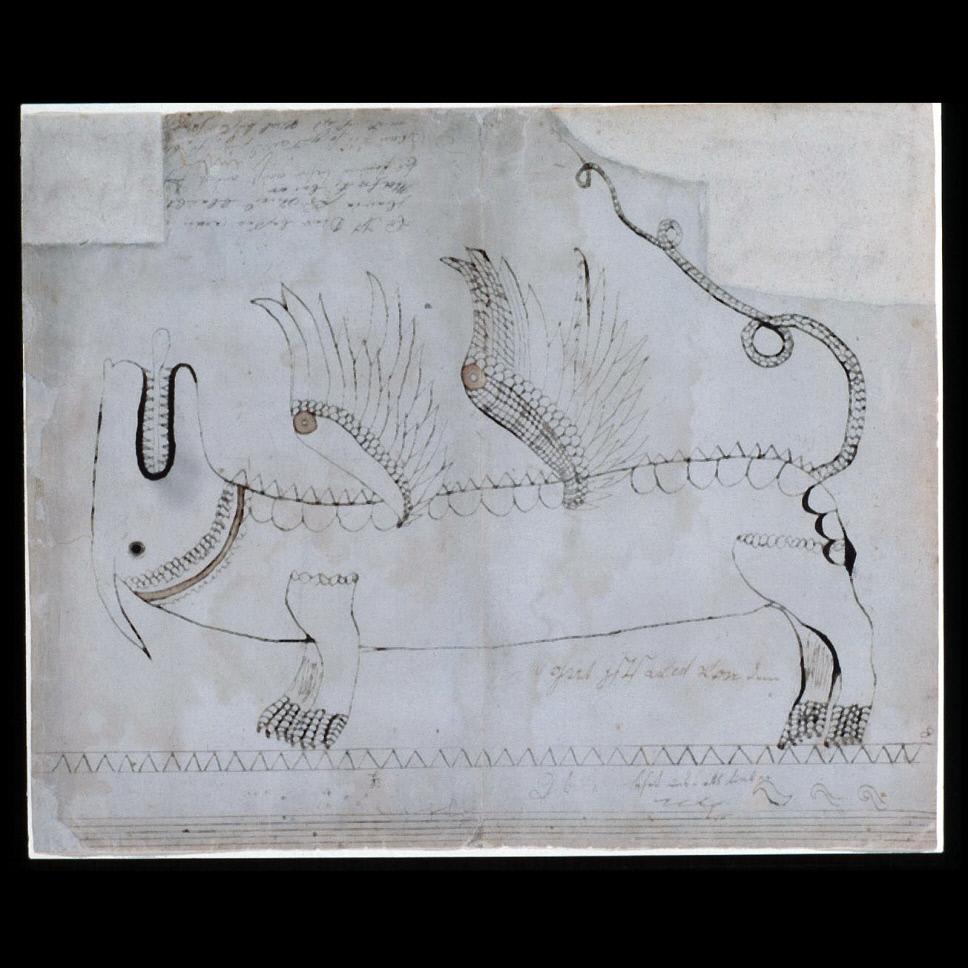
Winged Dragon, Jacob Strickler, 1803 Colonial Williamsburg Collections Acc. No. 1974.305.6
And, finally, from the Royal Collection comes this head of a dragon by Sebastiano Ricci, obviously drawn from life….

Head of a Dragon, Sebastiano Ricci, c. 1732 https://www.royalcollection.org.uk/collection/search#/10/collection/907110/head-of-a-dragon
For other dragons to appreciate, see my previous posts on Notes on American Dragons, Past Praying For, Outrunning the Dragon, and The Mexican Mine Monster.
Happy Appreciate a Dragon Day!
Chris Woodyard is the author of A is for Arsenic: An ABC of Victorian Death, The Victorian Book of the Dead, The Ghost Wore Black, The Headless Horror, The Face in the Window, and the 7-volume Haunted Ohio series. She is also the chronicler of the adventures of that amiable murderess Mrs Daffodil in A Spot of Bother: Four Macabre Tales. The books are available in paperback and for Kindle. Indexes and fact sheets for all of these books may be found by searching hauntedohiobooks.com. Join her on FB at Haunted Ohio by Chris Woodyard or The Victorian Book of the Dead.
